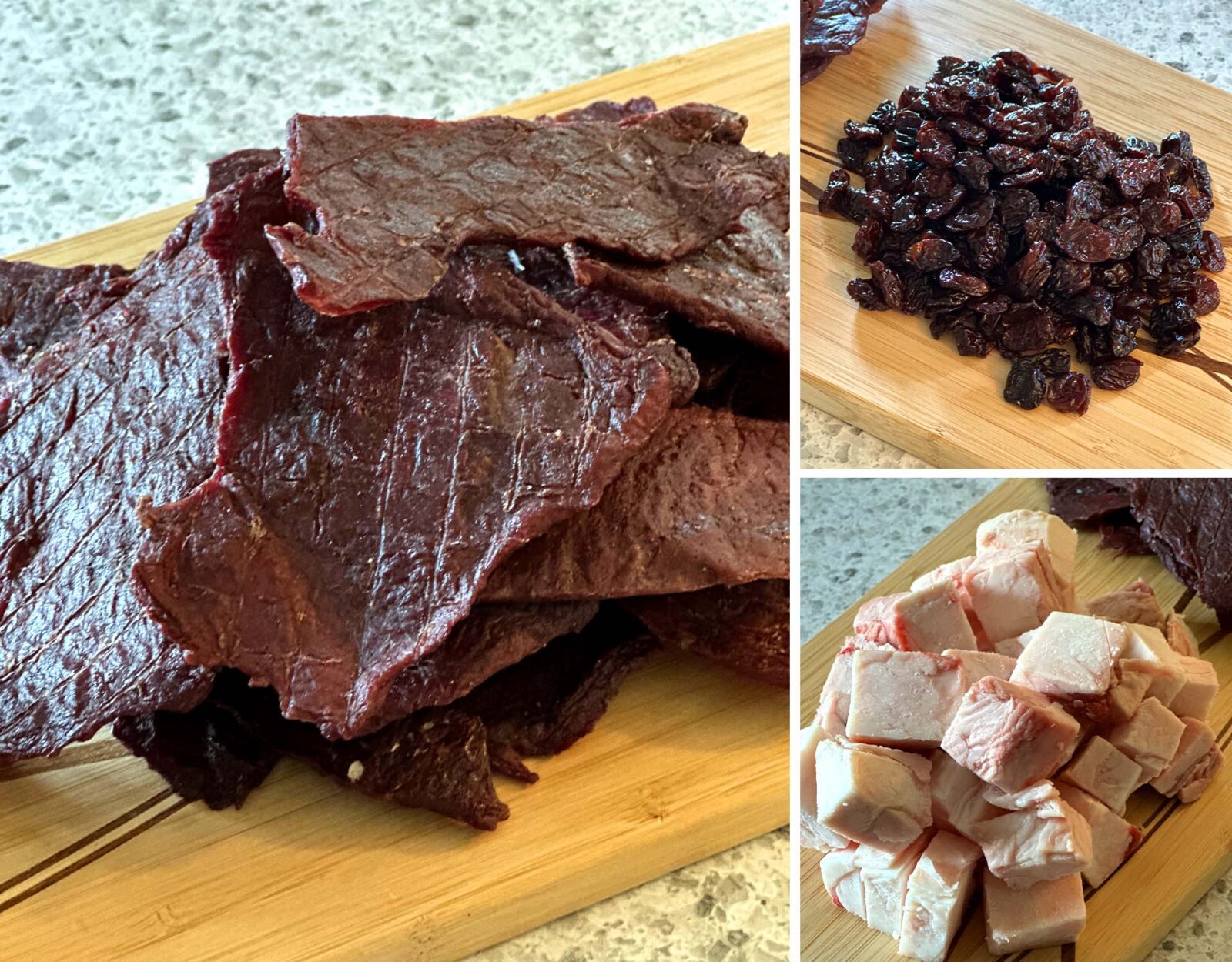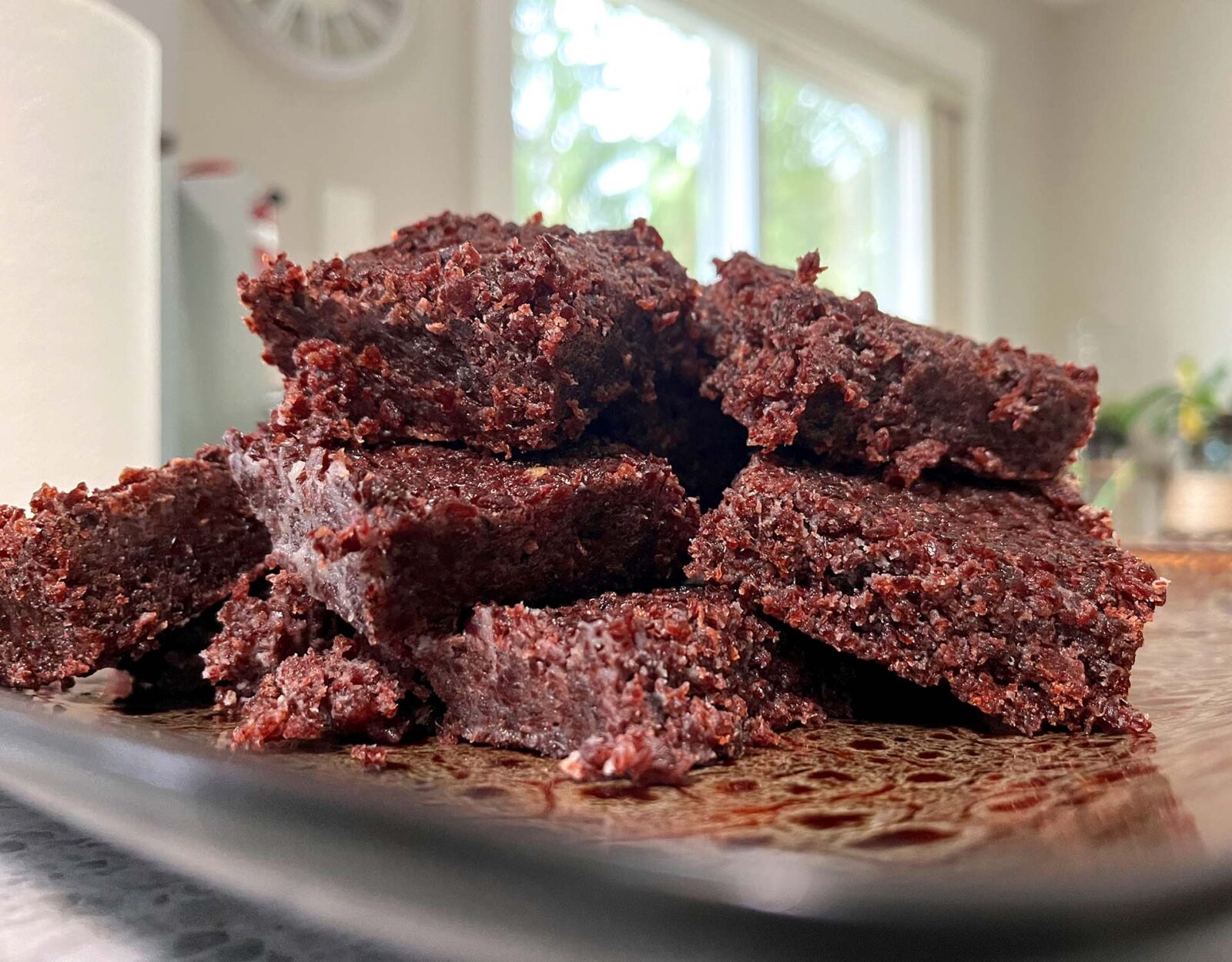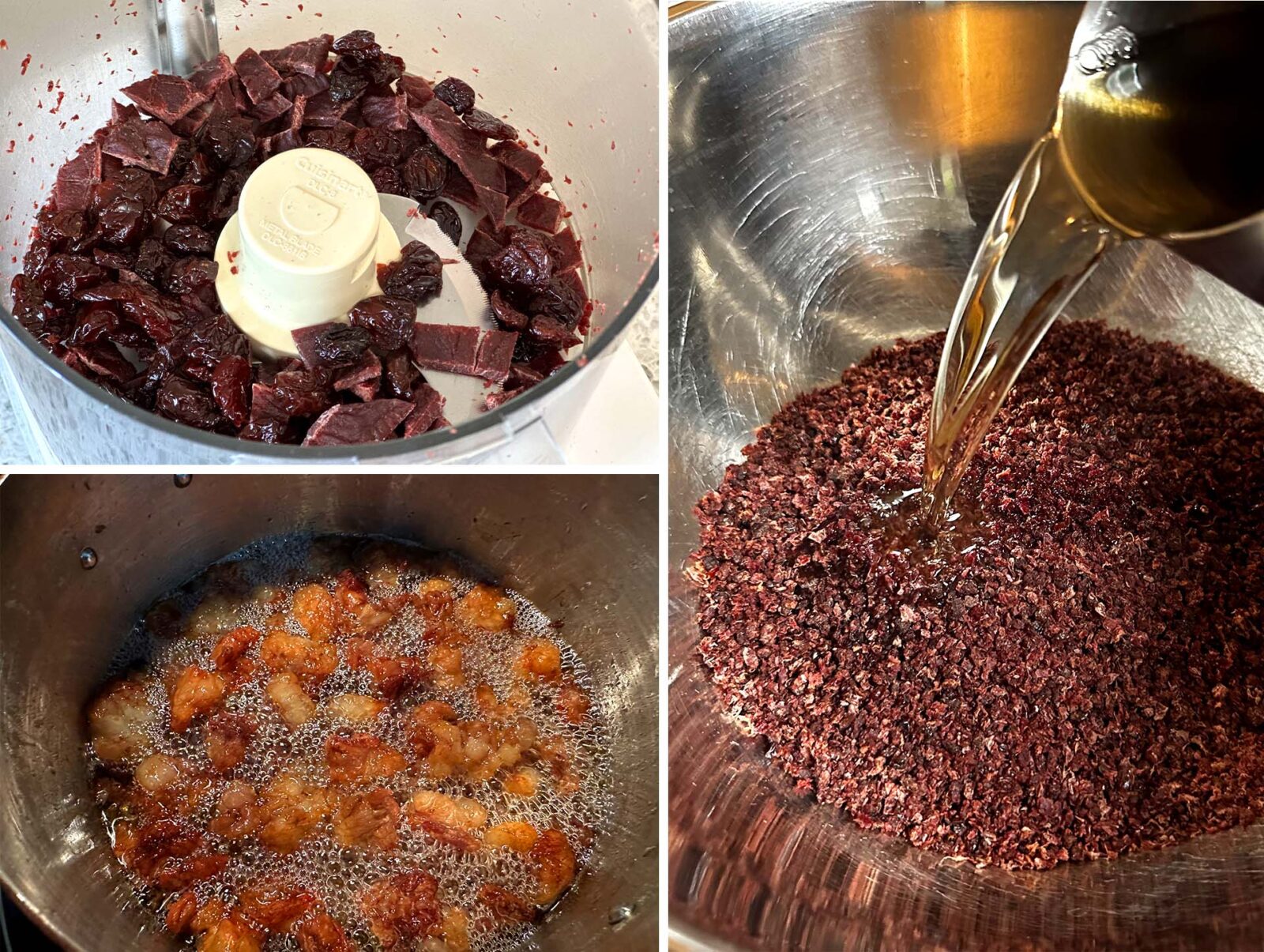Pemmican was invented by the Indigenous peoples of North America and introduced to the fur trade industry in 1779. It was especially important to the Indigenous peoples of the Woodlands and Plains, as well as the Métis (blended culture of European and Native descent). In a time when hunters, gatherers, and fur traders needed nutrient-dense and portable food stores, pemmican became one of the two most important staples (along with hardtack, a type of dense biscuit/cracker made from flour, water, and sometimes salt).
Pemmican is still popular today, especially with active outdoors people, survivalists, and those following keto, paleo, or carnivore diets. Pemmican is quite simple to make at home using venison, offal, or store-bought dried meats and berries. Find out how to make your own pemmican by following our step-by-step guide.
What Is Pemmican?
Pemmican is a mixture of rendered fat (tallow), dried meat, and often dried berries. It is sometimes sweetened by honey. It is calorie-rich, protein-packed, eaten raw, and does not need refrigeration.
Pemmican comes from the Cree word pimîhkân, which is derived from the word pimî, meaning “fat, grease”. The Lakota (or Sioux) used the word wasná, with the “wa” meaning “anything” and the “sna” meaning “ground up.” When fresh meat was not available, pemmican was the traditional energy food.
It was introduced to Peter Pond in 1779. Pond was a historically important European fur trader who traveled the Americas. Famous pioneer and fur trader, Sir Alexander Mackenzie, relied on pemmican to explore the plains of Canada in the 1890s, and Norwegian explorer Fridtjof Nansen had it with him during his Arctic expeditions. In addition to these fur traders of Canada and international explorers, the U.S. Army issued pemmican as an MRE from the late 19th century until the end of World War II.
Often it was traded alongside furs and other goods. In North America, it was commonly made with dried strips of bison, elk, or deer. These strips of meat were cut thin, dried in the sun, then smoked, and finally ground into a fine powder before adding fat and dried berries. The mixture would be stored in sewn bags of animal hide for easy transport or trade. Some bison-hide bags would be filled with 90 pounds of pemmican.
There are many subtle variations of pemmican recipes, each owing to what was available in those regions and seasons. However, in order for pemmican to be shelf stable it does require a one-to-one ratio of fat to meat by weight; although some recipes call for a two-to-one ratio of fat to meat for extra calories. Interestingly, honey is an acceptable sweetener because it never spoils.
One theory about the recipe’s origins traces back to the fact that one bison cow would yield 250 pounds of fresh meat, which made 50 pounds of dried meat, and the same cow would produce about 50 pounds of rendered tallow. This one animal provided equal parts dried meat and tallow.

Step-By-Step Guide To Making Pemmican
One of the two primary ingredients for making pemmican is dried meat, as in dried beef or venison jerky. You can use store-bought jerky, but if it’s very pliable it means there is residual moisture and moisture can make foods spoil. Another note about store-bought jerky is that it can be heavily salted or have its own preservatives added, which can affect flavor. Conventional jerky is also cut with the grain, making it more difficult to grind properly. If using conventional jerky, dry it in the oven at the lowest temperature after it’s been chopped in a blender or food processor to remove excess moisture and help with grinding it into powder.
Of course, making your own venison jerky at home is simple with a food dehydrator. Slice the meat as thinly as possible against the grain and dry it using the dehydrator’s meat setting (155°F / 68°C), flipping once during the process. Dry the meat until it’s brittle. Remember, it takes about 4-5 pounds of fresh meat to yield one pound of very dry jerky.

- 1 pound of very dry venison, bison, or beef jerky
- 1 pound beef or bison suet, cubed (do not use deer or elk fat)
- 8 oz. dried cherries, optional. Can also use dried berries or fruit of your choosing.
- 1/3 c. honey, optional
- Render the suet into its liquid form (tallow) either by placing in an oven-proof dish and placing in a 375-degree oven for 10 minutes. Another method is to rend it on low heat for 90+ minutes on a stovetop. Do not let it burn. Strain when done.
- While the tallow is rendering, chop or cut the jerky into small pieces. Using a food processor, in small batches, combine the jerky bits and dried cherries (if using) and grind until fine (about one minute).
- Optional: if using store-bought jerky you can further dry this processed mixture in a food dehydrator for about two hours. Spread the mixture on parchment paper on each dehydrator tray. The drier the jerky the longer the shelf-life of the final product.
- After tallow is fully rendered (and cooled a bit) and all jerky/fruit has been processed and dried, combine the ingredients in a large mixing bowl. Mix thoroughly then add 1/3 cup of honey (if using).
- In an 8×8 square dish or metal pan pour the mixture and press so it is even. Let it cool in a refrigerator for about an hour or leave on the counter overnight. Cut into 16 squares to make 2.2 oz. portions.

Storing and Preserving Pemmican
Pemmican was created to be portable and stored for long periods of time. Its shelf life may depend on its ingredients and storage conditions, but it is generally believed that pemmican can last, unrefrigerated, for one to five years. Some accounts tout that pemmican stored in cellars have lasted over a decade. Unsubstantiated claims have been made of storing it for as much as 50 years.
Serving and Enjoying Pemmican
Pemmican is meant to be eaten raw, as in no additional cooking beyond drying the meat and rendering the fat is needed. During the preparation process, you can roll single servings into small balls (as described above), or you can press the entire mixture into a square pan and then cut individual portions (like serving brownies). Ceremonial pemmican, which likely includes extra spices or fruits, is traditionally served loaf-style with it sliced like a fruit cake.
Pemmican is so nutrient-dense that it can serve as a standalone food source during strenuous activities. Its rich, savory, yet sometimes sweet, flavor will fuel just about any outdoor adventure in which you find yourself.

Health Benefits and Nutritional Value
Given that pemmican is made with lean meats and fat, it is certainly a high-calorie, high-protein, and high-fat food, and if it isn’t combined with dried fruits, pemmican is essentially no-carb as well. It is also preservative-free and has no artificial flavors or fillers.
Nutritionally, pemmican is considered a complete food, meaning it provides all the carbohydrates, fats, protein, vitamins, and minerals your body needs to stay healthy for an extended period of time. There are accounts of people surviving off of pemmican for months at a time.
Very active individuals say they can eat one-quarter to one-half pound of pemmican twice a day to help fuel their adventures. Pemmican is a much more nutritionally balanced food source than jerky alone.
Its nutritional facts will vary depending on the types of meat used and whether dried berries and/or honey were added. Some recipes tout having 3,500 calories per pound, but in its most basic form pemmican’s macros and nutritional value are:
Per 50 g. serving (about 2.2 ounces):
- 388 calories
- 1 g. Carbohydrates
- 34 g. Protein
- 28 g. Fat